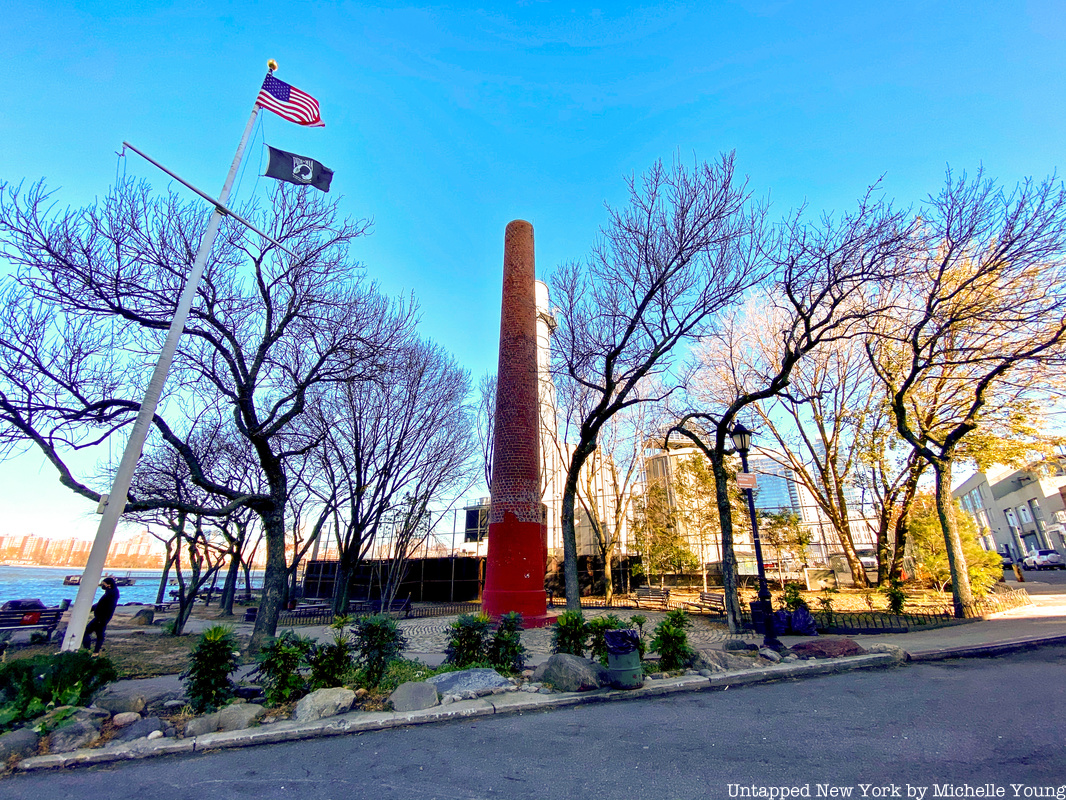The first COVID-19 vaccines expected to arrive in New York State will be produced by Pfizer, a pharmaceutical company with historic roots and a current presence in New York City. Governor Cuomo recently announced that New York State expects to receive an initial delivery of enough COVID-19 vaccine doses for 170,000 New Yorkers by December 15th, as long as all safety and efficacy approvals are granted by the federal government. While we eagerly await the delivery, Untapped New York is uncovering the history and physical remnants of Pfizer. From its founding in 1849 through to the early 2000s, Pfizer’s manufacturing and research facilities in Brooklyn grew to encompass 660,000-square-feet. While many of those buildings, including the original 1849 manufacturing building, have been demolished since the company left in 2008, there are still many unique remnants of the company that can be found in Williamsburg. One such remnant is a towering red Pfizer smokestack on the waterfront at Grand Ferry Park. This ruin is a symbol of one of Pfizer’s most incredible breakthroughs.
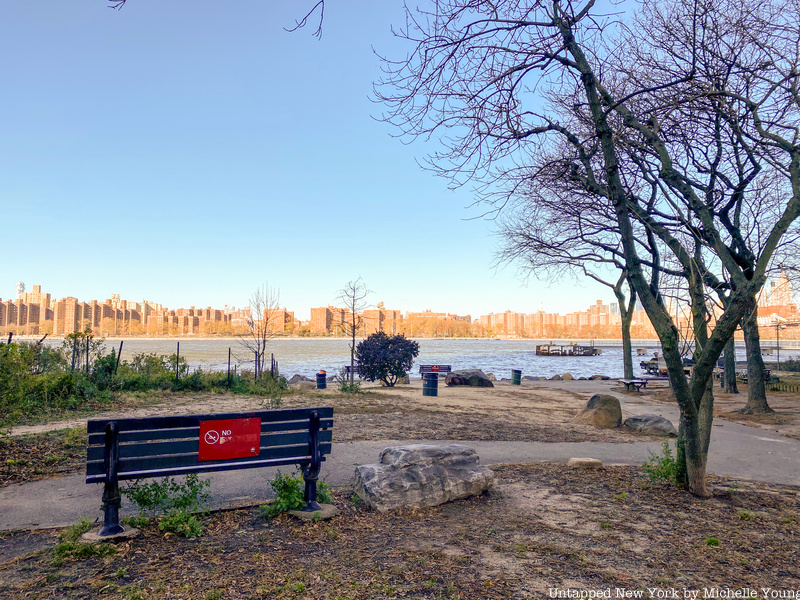 The waterfront view at Grand Ferry Park
The waterfront view at Grand Ferry Park
In the 19th-century, one of Pfizer’s most popular products was citric acid, a popular additive in food and beverages, especially soft drinks like Coca-Cola. To make this product, the company imported citrus fruits, like lemons, from Europe. This process worked well for decades until the onset of World War I. The violent conflict disrupted Pfizer’s supply of imported citrus, so the company needed to find a way to manufacture their in-demand product without relying on foreign markets. Scientists experimented with a variety of methods until food chemist James Currie hit upon a revolutionary discovery. Currie found a way to convert sugar into citric acid, freeing the company from its reliance on European materials. Over the next few years, Currie mastered this fermentation process. By the mid-1920s, the production of citric acid from sugar overwhelmingly outpaced production from fruit.
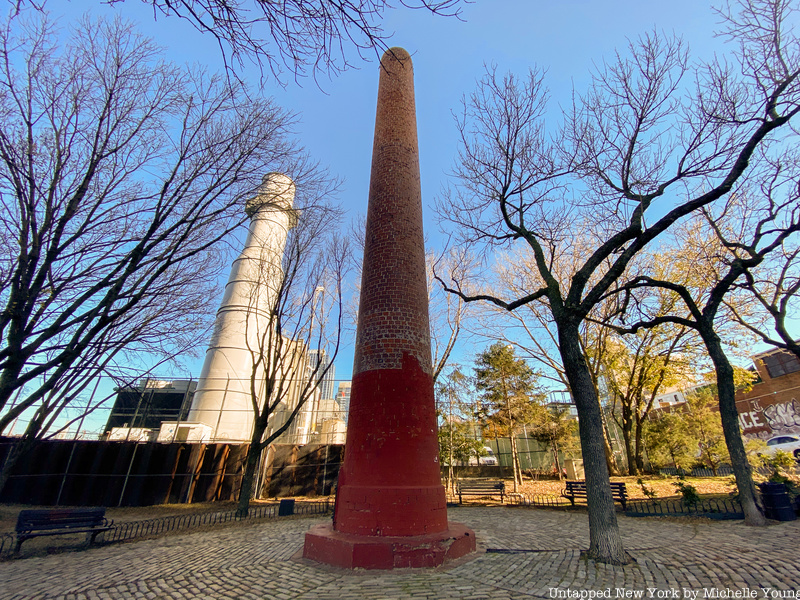
To facilitate this fermentation process, Pfizer opened a molasses processing plant on the Brooklyn waterfront in the early 20th-century. The only piece left of the plant is a 20-foot-tall smokestack. The Pfizer smokestack was preserved and is now a fixture of Grand Ferry Park on River Street and Grand Street. The plant was down the road from another one of Brooklyn’s industrial giants, the Domino Sugar Factory, now Domino Park. This molasses processing plant was located just over two miles from Pfizer’s main manufacturing hub on Flushing Avenue. Grand Ferry Park is named for the 19th-century Grand Street Ferry, which used to carry farm goods and passengers from Brooklyn across the East River to Manhattan. The cobblestones arranged in a circular pattern around the base of the Pfizer smokestack were salvaged from the section of Grand Street where the park was constructed.
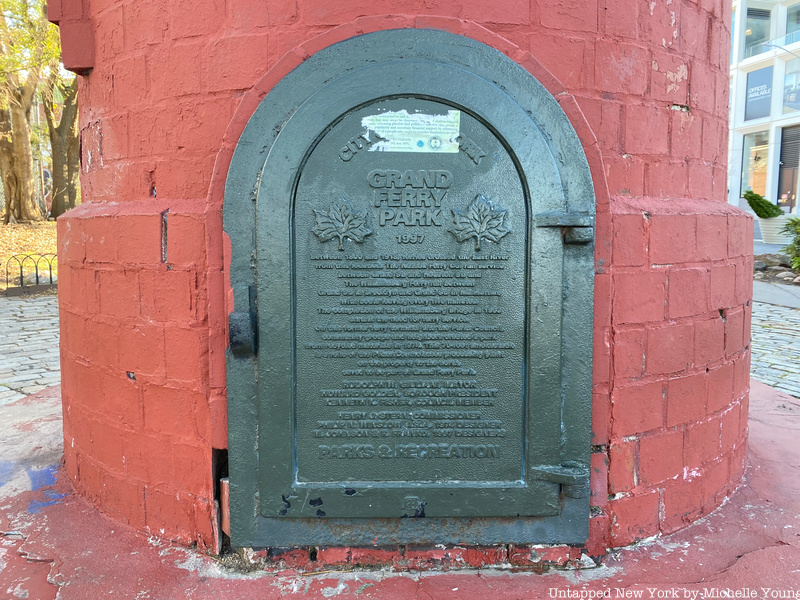
The fermentation process continued to be refined and applied to the production of other items such as gluconic acid, a food preservative and cleanser, ascorbic acid (Vitamin C), and eventually penicillin. In 1941, the United States government put out a call for companies to expedite the mass production of penicillin. The deep-tank fermentation process Pfizer had already developed, gave the company an edge over competitors. Pfizer purchased the Rubel Ice Plant on Marcy Avenue, near the company’s growing Brooklyn lab compound, and turned it into a penicillin factory. By the mid-1940s, Pfizer was the largest producer of penicillin in the world, churning out five times the expected amount.
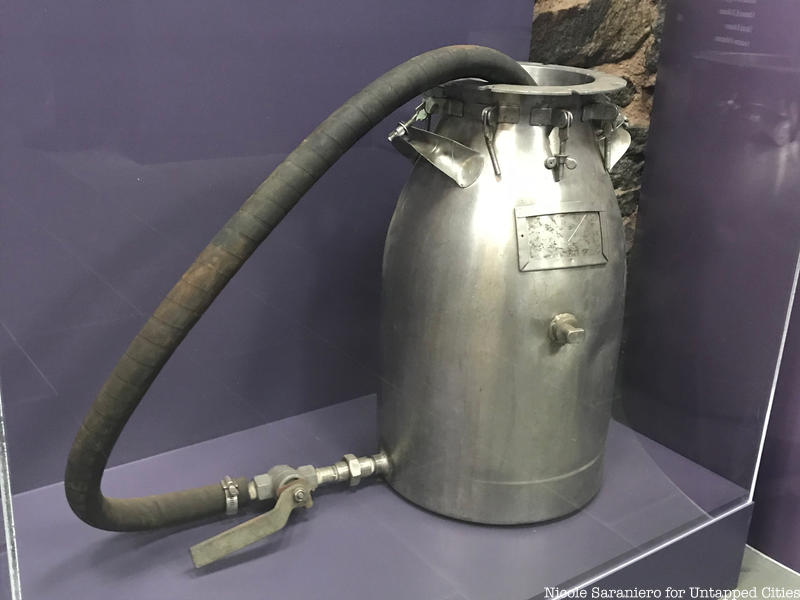 A mid-20th-century penicillin storage container from Pfizer’s Bartlett Street lab on display at the Brooklyn Historical Society
A mid-20th-century penicillin storage container from Pfizer’s Bartlett Street lab on display at the Brooklyn Historical Society
The pharmaceutical giant now producing cutting-edge and life-saving medications and vaccines started in a small brick manufacturing building in Williamsburg in the mid-1800s. Known originally as Charles Pfizer & Company, its first successful medication was a palatable santonin, a cure for the common 19th-century ailment of intestinal worms. This product made us of the talents of the company’s founders, Charles Pfizer, a chemist, and his cousin Charles Erhart, a former confectioner. During the Civil War, business boomed as more pharmaceuticals were needed on the battlefield. The Brooklyn plant continued to expand around its main hub bounded by World War II brought another period of growth and the company soon became a global presence.
Today, the former Pfizer warehouse in Williamsburg is home to a local manufacturing hub, very similar to the one at the Brooklyn Navy Yard. For the time being, Pfizer’s global headquarters remain at 219 and 235 East 42nd Street, the address it moved to in 1961. However, the company is set to relocate to “The Spiral,” a twisting glass skyscraper designed by Bjarke Ingels at Hudson Yards. The Pfizer smokestack is just one small piece of the legacy the company has left throughout New York City.
Want to learn more about Williamsburg’s transformation from a gritty industrial neighborhood to hip artistic enclave? Join our Untapped New York Insiders for a virtual walkthrough with Untapped New York’s Cheif Experience Officer Justin Rivers! Not an Insider yet? Become a member today and get two months with code JOINUS. A video of the tour will also be made available to all our Insiders afterward in the Video Archive section of our website.
Next, check out Pfizer’s 170+ Year History in New York City and Inside Brooklyn’s Former Pfizer Plant and Its Transformation into Manufacturing Hub






